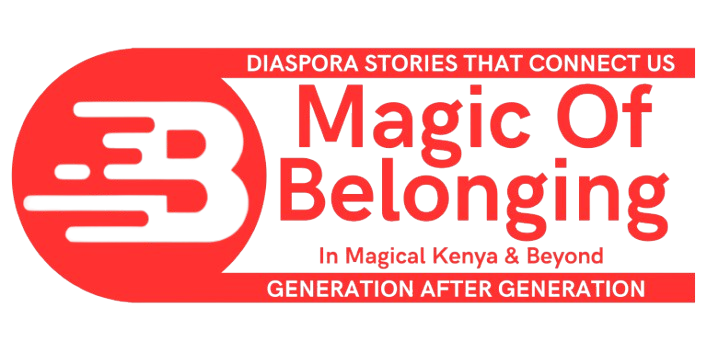On any given day in Seattle, you might catch Gathigi “Thig” Gishuru directing a high-profile brand campaign with precision and grace—clean lines, bold colors, stories that move people. But peel back the sleek branding decks and finely crafted campaigns, and you’ll discover a heartbeat that thumps with two rhythms: Kenya and America. Thig’s success wasn’t just shaped by the creative streets of Rainier Valley or the glossy offices of Nordstrom—it was forged at the very intersection where tradition and modernity, heritage and innovation, collide.
For Thig, belonging has always been a layered experience.
Rainier Roots, Kenyan Heart
Raised in Seattle’s South End—the city’s most diverse enclave—Thig grew up in a household where Kikuyu phrases mingled with 90s hip hop, and ugali shared space with crab boils from the Puget Sound. Summers spent on Bainbridge Island with his grandfather—fishing, watching the tide roll in—cemented a spiritual connection to nature that still inspires his creative eye today.
Home was a Kenyan enclave in an American city. His parents, like many Kenyan immigrants, were high-achieving and disciplined, and the house hummed with reminders of where they came from. At school and in the wider world, Thig wore American clothes and spoke English, but his inner compass was already being shaped by ancestral echoes. He learned to move between spaces—not just physically, but emotionally and culturally.

Dual Lives: The Hip-Hop Architect and the Desk Job
After college, Thig took a nine-to-five job at the Fred Hutchinson Cancer Research Center as a Contract Specialist. It was logical, steady, respectable. But at night, when the spreadsheets were closed and the corridors dimmed, he became “Thig Natural,” a mic-wielding MC, pouring his observations and frustrations into rhymes with his group, The Physics.
The Physics—formed with his brother Monk Wordsmith and producer Justo—was never just a rap group. It was a vessel for memory, migration, and meaning. Their lyrics didn’t posture. They told real stories—of family, of Seattle street corners, of immigrant hustle, and always, subtly, of Kenya.
“We weren’t trying to be famous,” Thig once said, “we were just telling the truth—our truth.”
Songs like “Journey of the Drum” whispered of ancestral lands. Others like “Coronas on Madrona” were love letters to the neighborhoods that raised them. “We weren’t trying to be famous,” Thig once said, “we were just telling the truth—our truth.” In an era of rap bravado, The Physics gave voice to the quiet dignity of Kenyan-American existence.
They recorded, toured, crowdfunded albums, and built a loyal following. Their Kickstarter for Tomorrow People wasn’t just fundraising—it was community-building. They were redefining what it meant to be local and global, all at once.
Designing the Future: From Beats to Brands
As the group’s sound matured, so did Thig’s vision. Eventually, his creative pursuits outgrew the confines of music. The same instincts that helped him craft rhymes—attention to rhythm, visual imagery, and cultural nuance—began guiding him into the world of design.
He transitioned seamlessly into brand storytelling. First Nordstrom. Then T-Mobile. Then REI. And finally, Zulily, where he became Creative Director of Brand Design. Along the way, he founded Thig Studio, a design lab focused on using visual storytelling to elevate brands from the inside out.
But even in corporate spaces, his Kenyan DNA was never absent.
Thig’s design philosophy is rooted in narrative depth. He favors minimalism not for trendiness, but because it echoes the quiet power of oral storytelling—every image, like every word, must earn its place. His aesthetic is intentional: crisp denim, a pattern of florals here, a nod to camo there. “Design is culture,” he says. “And culture is memory. The things we remember shape the way we see.”
Ubuntu in the Workplace
At every stage of his career, Thig has returned to one principle: collective elevation.
His LinkedIn posts don’t just celebrate campaigns—they advocate for hiring diverse talent, mentoring young creatives, and making space for people of color at the highest levels. It’s not performative. It’s Ubuntu: I am because we are.
He doesn’t just build brands—he builds bridges. Between the boardroom and the barbershop. Between Seattle’s booming tech culture and Nairobi’s creative renaissance. Between generations of Kenyans in diaspora who, like him, have spent their lives asking, “Where do I belong?”
Kenya in the Margins
Though his career has often unfolded far from Kenya’s soil, the country never stopped whispering in the margins of his work.
The structure of his storytelling reflects African oral tradition. The trust he builds with clients mirrors the communal economy of Kenyan life. Even his photography—tender, attentive, alive—draws on the stillness he learned while crabbing with his grandfather, watching the water for signs.
And when he looks to the future, it’s with the same clarity: more collaboration, more storytelling, more space for voices like his. “I photograph people so audiences can see what I see,” he says. And what he sees is possibility—creative, cultural, and generational.
The Blueprint for Belonging
Gathigi “Thig” Gishuru didn’t choose to straddle worlds—he was born into the tension of them. But instead of resisting it, he learned to mine it. And in doing so, he’s crafted a life where belonging is not a destination—it’s an art form.
Through music, branding, mentorship, and narrative, he’s building a bridge between Kenya and the world, between the dreams of immigrant parents and the creative freedoms of their children.
And for those who feel like they’re living in-between—too Kenyan for America, too American for Kenya—Thig’s life offers this reminder: You don’t have to pick a side. You are the intersection. That’s where the magic lives.
The Review
PROS
- Good low light camera
- Water resistant
- Double the internal capacity
CONS
- Lacks clear upgrades
- Same design used for last three phones
- Battery life unimpressive




























